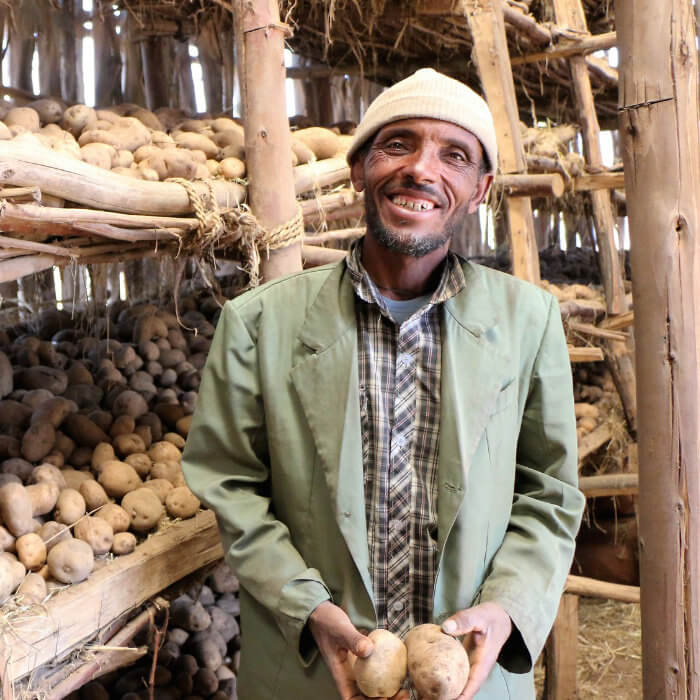How can we effectively integrate social protection programs?
Households in the Ethiopian highlands are vulnerable to myriad destabilizing shocks: bad weather and locust infestations undermine crop production; an able-bodied household member seeks out wage employment only to lose their job when the market contracts; a household breadwinner suffers a debilitating illness and bears a major financial loss trying to pay for treatment. Many social protection programs managed by the Ethiopian government — such as the Productive Safety Net Program (PSNP) and the Community-Based Health Insurance (CHBI) Program — provide benefits that can help households mitigate, adapt to and recover from these types of shocks.
But not all of the vulnerable households in the highlands are enrolled in all of the programs that are available to them. One way to get more vulnerable households the support they need is to better integrate social protection programs.
Research shows that if programs were better linked and layered with one another, the programs could collectively ensure that households with multiple needs receive benefits from multiple programs. For example, when PSNP program administrators do targeting in their district, they learn the poverty status of a broad swath of households. They could share this information with the CBHI program team so that CBHI program administrators can reach out to the poorest households who are eligible for a CBHI premium subsidy. CBHI can then offer these households health insurance at the more affordable, subsidized rate.
In Ethiopia, Results for Development is leading work with government and development practitioners through the Rapid Feedback MERL mechanism to design, implement, and test solutions to better integrate existing social protection programs. The initiative, known as Transition into Graduation through Enhanced Resilience – Operations Research (TIGER-OR) is designed to identify policies that will support integration and ultimately increase the resilience of vulnerable populations in the Ethiopian highlands.
Integration comes in many forms: information sharing arrangements, working groups that meet periodically to share cross-program updates, protocols that ensure extension workers check households’ eligibility for multiple programs when they do house visits. Finding a workable approach to integration that gets more households the benefits they need is, first and foremost, a technical challenge. But the long-term success of integration also depends on broader factors.
3 factors for success in improving integration of social protection programs in the Ethiopian Highlands
When practitioners are try solving a development challenge, they usually do one of two things: they replicate an existing intervention design, or they test out a new approach. In either case, a narrow group of people typically drives the intervention design process.
The problem with this approach to development is that, frequently, the gains are short-lived, and successes in one context don’t transfer to another. “What works” simply doesn’t scale beyond the pilot project in which it was first tested.
We believe there are three factors that must be considered and incorporated into program design to be successful:
- Context: Is the proposed solution appropriate for the context in which it is implemented? In the Ethiopian Highlands, the districts are incredibly heterogeneous. Solutions to the integration challenge must be tailored to these differences.
- Local ownership: Is the integration solution locally owned? If the district’s own program administrators aren’t the ones pushing it forward, then what happens when outside support ends?
- Government buy-in: Is the integration solution supported by the government? Much of the money and all of the political will to keep an integration approach going comes from government partners. If they don’t believe in a specific approach, why would they continue to fund and champion it?
The solution? Co-creation.
R4D’s proposed solution to this challenge — one that solves for context, local ownership and government buy-in — is co-creation. Our process brings in a wider group of stakeholders to collaboratively design an approach to better integrate the social protection programs in the Ethiopian Highlands.
It draws on diverse expertise of district administrators and implementing partners to combine global knowledge with local context, with the end goal of more sustainable, scalable interventions that produce better outcomes.
That’s the ambition, at least. But does it work?
We plan to test whether the integration solutions are successful and also whether taking a co-creation approach is an intervention in and of itself. Stay tuned as we share more on what we learn about effective ways to better integrate the social protection programs that are part of USAID’s TIGER-OR activity.
Photo © Adey Abebe, JSI Last Ten Kilometers project














